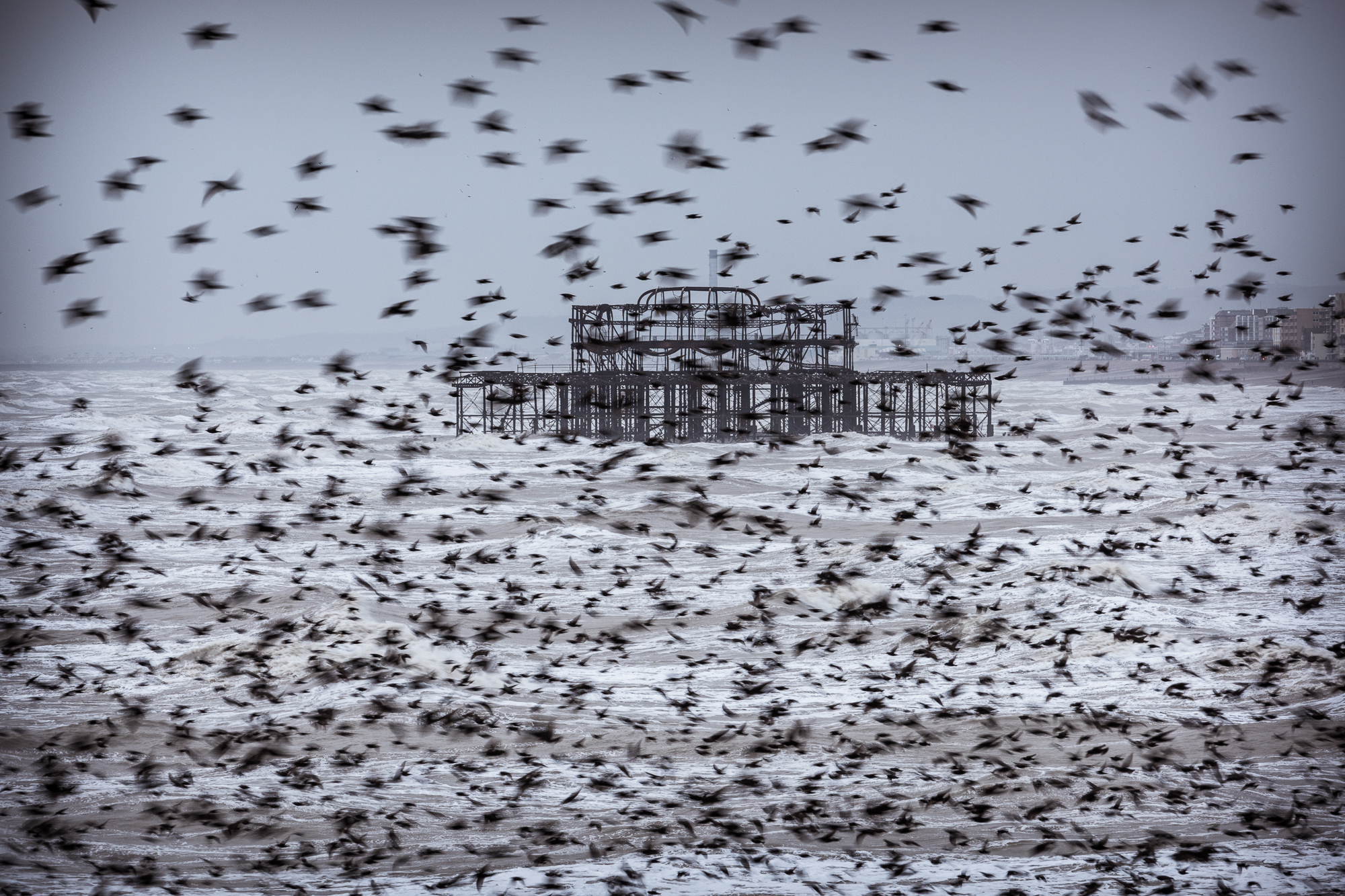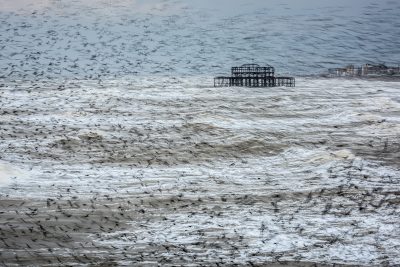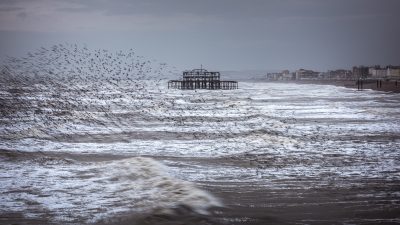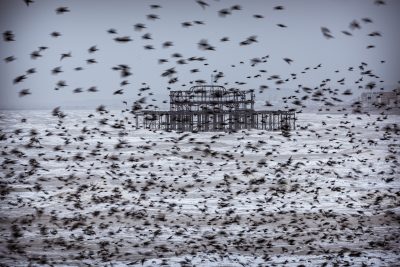For years I have wanted to witness a starling murmuration. Having recently moved to Berkshire, my wife and I have spent a fair amount of time exploring the South coast. Of course I had seen the impressive videos of Starlings performing amazing aerobatic displays through the sky and I had a few ideas of how I wanted to go about photographing them. However it is not until you stand and witness it for yourself that you realise just how integral the starlings are to this particular coastal landscape at this time of year.
I watched the murmuration for around an hour, taking photographs from different angles and using different camera settings and techniques to record them. It was quite exciting as you have no control over where the birds are going to be when you release the cameras shutter so there is no really way of predicting the outcome. I wanted to draw a parallel between the fluid motion of the starling murmuration (Sturnus vulgaris) at Brighton Pier and the crashing waves below.
When the starlings arrived at the pier, the flock was immense and filled the air in front of me. From where I was stood, the ruins of the pier were very prominent and it made sense to include it in the frame as a reference point. I have seen many excellent photographs of the West Pier over the years, however they are usually taken from the beach looking out to sea.
Photography has always been present in my life and for as long as I can remember I have used a camera. It started with small compacts, I then moved onto my grandad’s old manual Practika camera, which I still have somewhere in its original case, before buying my first modern SLR when I was 18.
I took a dark room photography course to supplement my Art A level at college and it was during this time that I took my first memorable photograph. It was of light reflecting on the ripples of a lake, photographed through willow leaves and I quite liked the overlaying of the two different textures. I developed the black and white film and enlarged it in the dark room.
After college I went on to train as an Architect and photography took a back seat until fairly recently. I currently spend four days a week working in an office as an architect and my Fridays and weekends outside taking photographs.
No photographer should be without a decent, sturdy tripod. It slows you down and makes you consider what you’re photographing a little more carefully. It is also essential when working with slower shutter speeds that would be impossible to hand-hold and keep sharp. There are many different types of filters available to photographers, however a polarising filter is very handy for cutting out reflections and boosting colour saturation.
The right clothing is really important. If you’re planning on spending any great length of time photographing outside, you might as well be comfortable. Give some thought to your feet as well, you can rack up some miles if you’re out all day.
Next year I plan on expanding my ongoing wildlife projects photographing deer and seabirds. For this I record more of the environment they inhabit so that my photography can tell a more complete story.
I’ve recently started selling prints and it’s been really nice to hear the ways in which people have personal connections with my photographs. I hope to continue taking photographs which resonate with people. And of course I’ll be heading back to photograph the Starlings at Brighton again this winter.
Matthew’s advice for amateur photographers on getting started and how to get the perfect shot:
- Look at the work of others either in books, magazines or online. Think about the way in which the photographer has approached their subject and try to understand why it resonates with you. Then when you’re out with your camera don’t try to emulate it, but allow yourself to be influenced by it.
- When you first start out you want to photograph everything. Try to slow down and focus on a particular subject for a while. Don’t move on until you’re confident you have exhausted all of the options.
- Be alert to interesting events or behaviour as this helps to elevate your images above a simple snap-shot of the same scene.
Take a look at more of Matthew’s work on his website.





